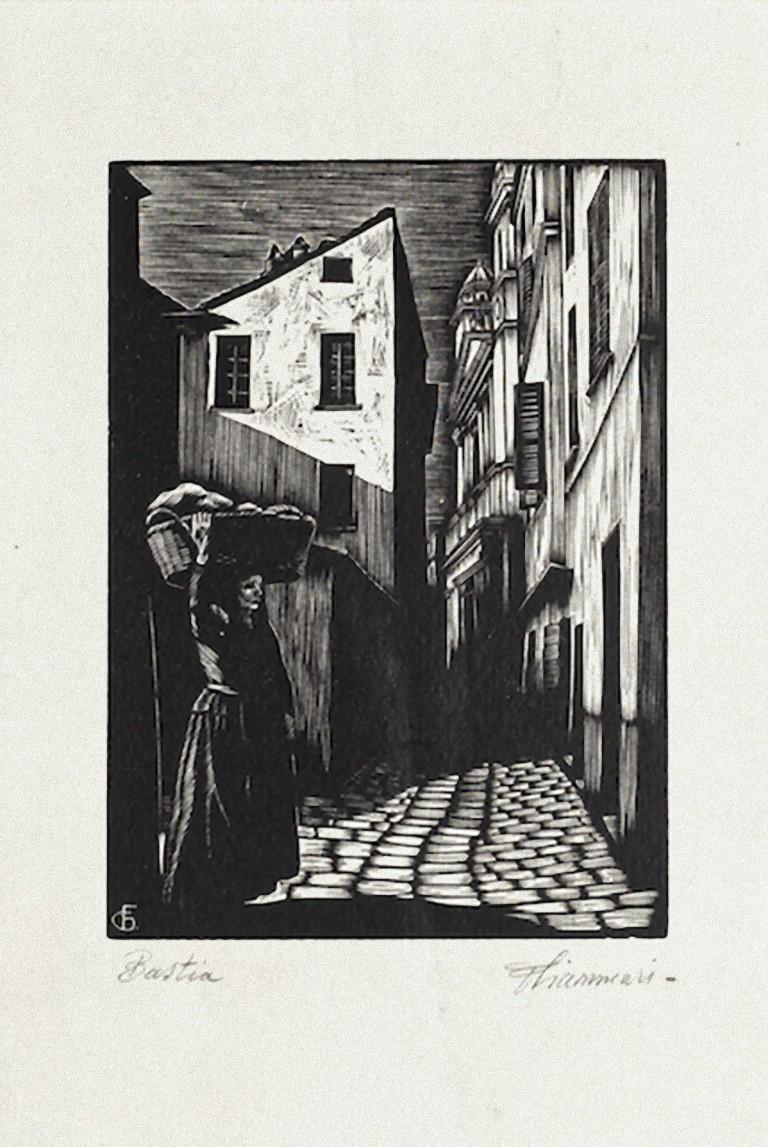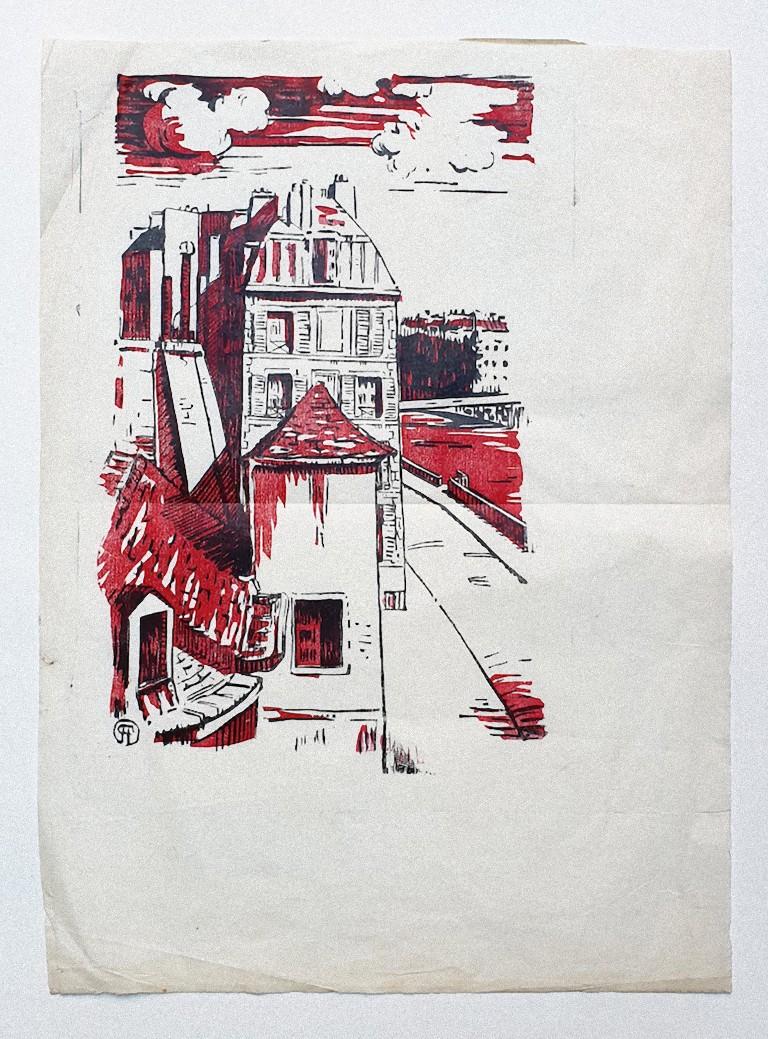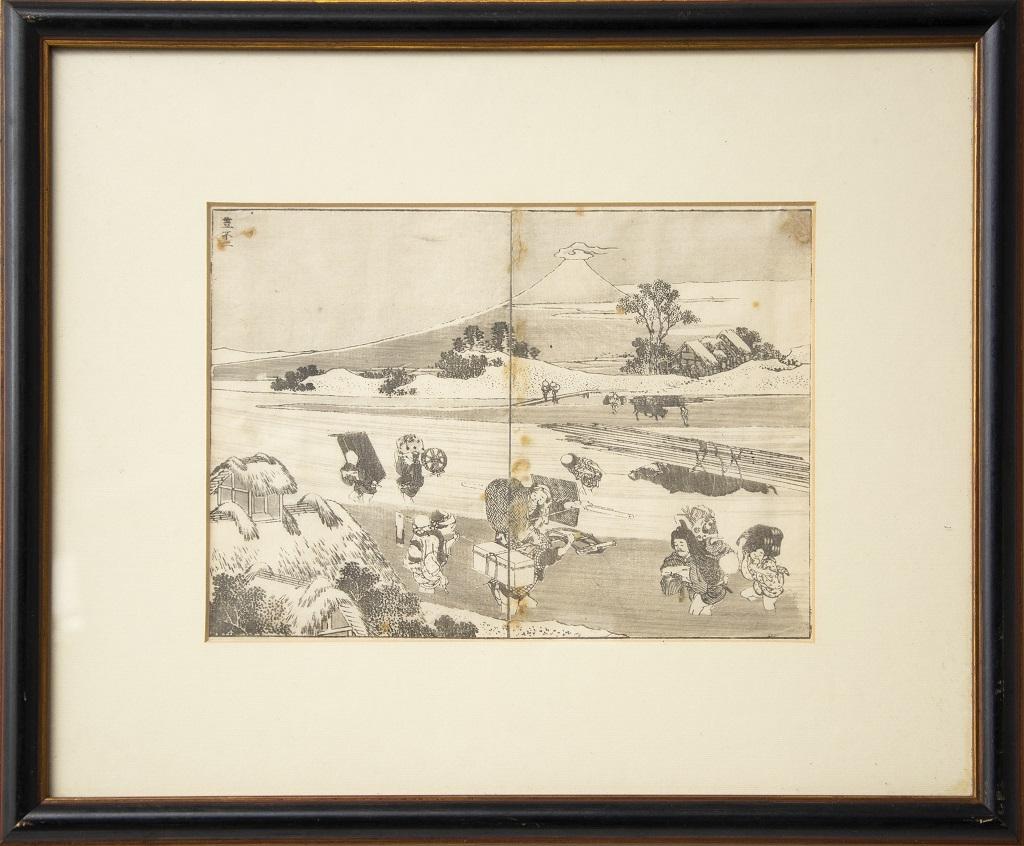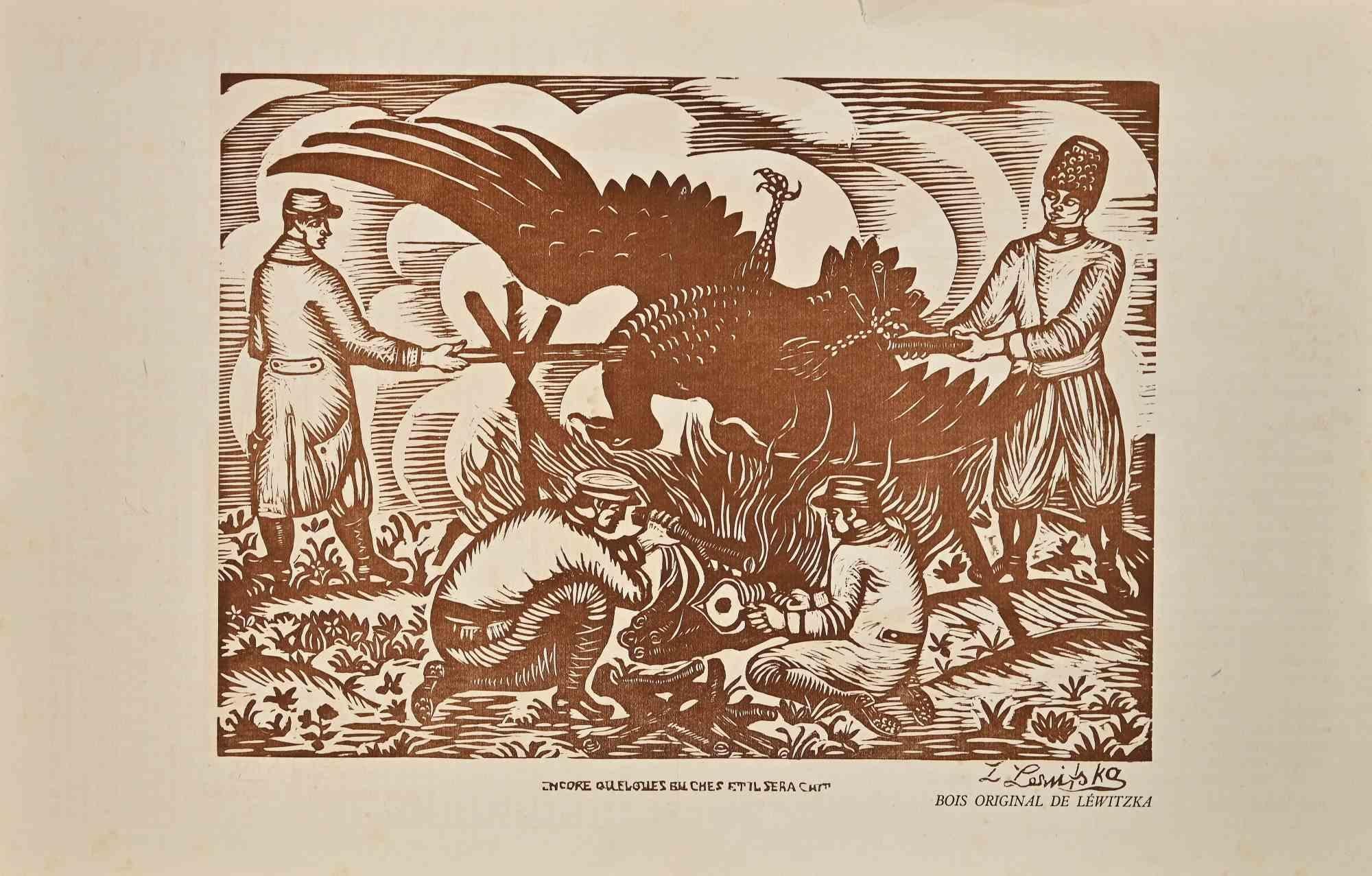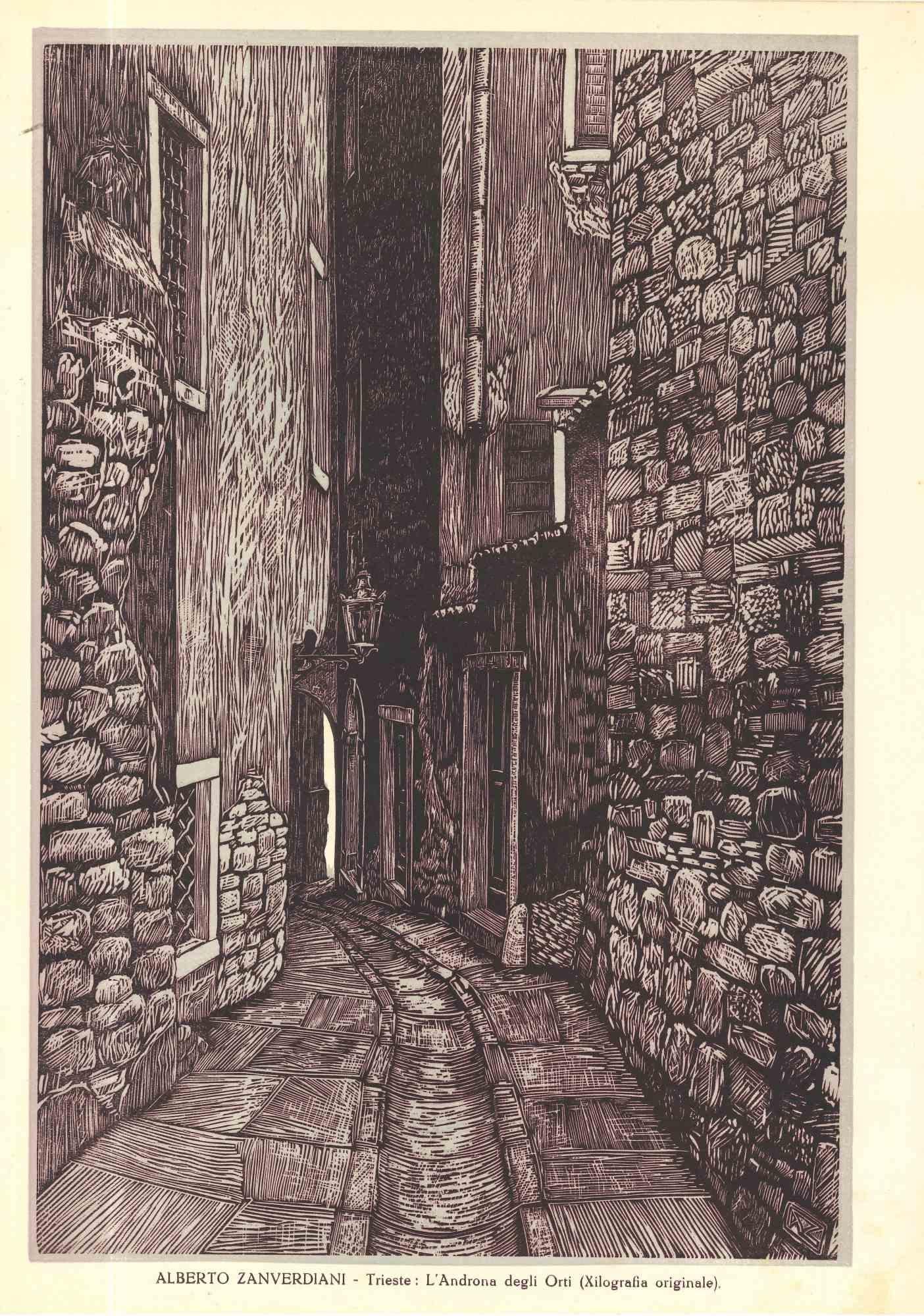Items Similar to Boat (study for estuary)
Want more images or videos?
Request additional images or videos from the seller
1 of 5
Richard BosmanBoat (study for estuary)1987
1987
About the Item
Richard Bosman (b. 1944) is a painter and printmaker known for his woodcuts depicting turbulent seascapes. He studied at Bryam Shaw School of Painting and Drawing in London, The New York Studio School, and the Skowhegan School of Painting and Sculpture in Maine. In the early 1980s, Bosman heralded the return of representation with dramatic paintings that recalled the drama and dark romance of sensationalist crime photography and pulp fiction. Later in his career, he moved away from manmade drama, opting to depict instead the natural phenomena of volcanoes, ebbing tides, and crashing waves. Bosman is the recipient of a Guggenheim Fellowship. His work has been exhibited extensively, including solo shows at numerous international galleries, as well as in group exhibitions at museum venues including the Museum of Modern Art, the Walker Art Center, the Whitney Museum, and the Brooklyn Museum. His work also is in the collection of numerous museums including the Detroit Institute of Arts, The Fogg Art Museum at Harvard University, the Metropolitan Museum of Art in New York, the Museum of Modern Art in New York, the National Museum of American Art and the Library of Congress, both in Washington, D.C., the Museum of Contemporary Art in Los Angeles, the Philadelphia Museum of Art, the Walker Art Center, the Whitney Museum of American Art, and many others
- Creator:Richard Bosman (1944, American)
- Creation Year:1987
- Dimensions:Height: 24 in (60.96 cm)Width: 16 in (40.64 cm)
- Medium:
- Movement & Style:
- Period:
- Condition:
- Gallery Location:New York, NY
- Reference Number:1stDibs: LU32921476783
Richard Bosman
Richard Bosman (b. 1944) is a painter and printmaker known for his woodcuts depicting turbulent seascapes. He studied at Bryam Shaw School of Painting and Drawing in London, The New York Studio School, and the Skowhegan School of Painting and Sculpture in Maine. In the early 1980s, Bosman heralded the return of representation with dramatic paintings that recalled the drama and dark romance of sensationalist crime photography and pulp fiction. Later in his career, he moved away from manmade drama, opting to depict instead the natural phenomena of volcanoes, ebbing tides, and crashing waves. Bosman is the recipient of a Guggenheim Fellowship. His work has been exhibited extensively, including solo shows at numerous international galleries, as well as in group exhibitions at museum venues including the Museum of Modern Art, the Walker Art Center, the Whitney Museum, and the Brooklyn Museum. His work also is in the collection of numerous museums including the Detroit Institute of Arts, The Fogg Art Museum at Harvard University, the Metropolitan Museum of Art in New York, the Museum of Modern Art in New York, the National Museum of American Art and the Library of Congress, both in Washington, D.C., the Museum of Contemporary Art in Los Angeles, the Philadelphia Museum of Art, the Walker Art Center, the Whitney Museum of American Art, and many others
About the Seller
5.0
Recognized Seller
These prestigious sellers are industry leaders and represent the highest echelon for item quality and design.
Established in 1979
1stDibs seller since 2015
60 sales on 1stDibs
Typical response time: 1 hour
Associations
International Fine Print Dealers Association
- ShippingRetrieving quote...Ships From: New York, NY
- Return PolicyA return for this item may be initiated within 14 days of delivery.
More From This SellerView All
- Long BranchBy Brad DavisLocated in New York, NYBrad Davis has exhibited at The Museum of Modern Art in New York, the New Museum of Contemporary Art in new York, the Hudson River Museum, the Uni...Category
Late 20th Century Modern Landscape Prints
MaterialsScreen, Woodcut
- CloudburstBy Louisa ChaseLocated in New York, NYLouisa Chase was born in Panama City, Panama. Seven years later, her family moved to Lancaster, Pennsylvania. She studied painting and sculpture at Syracuse University and at the Yal...Category
Late 20th Century Modern Landscape Prints
MaterialsWoodcut
- SquallBy Louisa ChaseLocated in New York, NYLouisa Chase was born in Panama City, Panama. Seven years later, her family moved to Lancaster, Pennsylvania. She studied painting and sculpture at Syracuse University and at the Yal...Category
Late 20th Century Modern Landscape Prints
MaterialsWoodcut
- EstuaryBy Richard BosmanLocated in New York, NYRichard Bosman (b. 1944) is a painter and printmaker known for his woodcuts depicting turbulent seascapes. He studied at Bryam Shaw School of Painting and Drawing in London, The New ...Category
Late 20th Century Modern Landscape Prints
MaterialsWoodcut
- CaveBy Louisa ChaseLocated in New York, NYLouisa Chase was born in Panama City, Panama. Seven years later, her family moved to Lancaster, Pennsylvania. She studied painting and sculpture at Syracuse University and at the Yal...Category
Late 20th Century Contemporary More Prints
MaterialsWoodcut
- Red TreesBy Louisa ChaseLocated in New York, NYLouisa Chase was born in Panama City, Panama. Seven years later, her family moved to Lancaster, Pennsylvania. She studied painting and sculpture at Syracuse University and at the Yal...Category
Early 20th Century Modern Landscape Prints
MaterialsScreen
You May Also Like
- Beast - Woodcut by F. Chiammari - 1960 ca.Located in Roma, ITBeast is an original woodcut realized by F. Chiammari in 1960 ca. Hand-signed on the lower right margin and titled on the lower left in pencil. In excellent conditions. Included a...Category
1960s Modern Figurative Prints
MaterialsWoodcut
- Riverside Houses - Woodcut on Paper - 20th CenturyLocated in Roma, ITRiverside Houses is an original woodcut on paper realized by an Anonymous artist of the XX century. With the monogram of the artist on the lower left....Category
20th Century Modern Figurative Prints
MaterialsWoodcut
- View of Mount Fuji - Woodcut after K. Hokusai - 1878By Katsushika HokusaiLocated in Roma, ITView of Mount Fuji is a modern artwork realized after Katsushika Hokusai (31 October 1760 – 10 May 1849). Woodcut print from the series "Fugaku hyakkei" (100 views of Mount Fuji). ...Category
1870s Modern Landscape Prints
MaterialsWoodcut
- Great Spit-on Bird - Original Woodcut by Sonia Léwitzka - Early 20th CenturyLocated in Roma, ITGreat Spit-on Bird is an Original woodcut print realized by Sonia Léwitzka. Good condition on acream colored paper. Signature on the lower right corner. On the back of the paper, ...Category
Early 20th Century Modern Figurative Prints
MaterialsWoodcut
- L'Androne degli Orti - Woodcut by A. Zanverdiani - Early 20th CenturyLocated in Roma, ITTrieste: l'Androne degli Orti is an original woodcut print by Alberto Zanverdiani in the early 20th Century. Good conditions. The artwork is depicted through stong strokes in a wel...Category
Early 20th Century Modern Figurative Prints
MaterialsWoodcut
- 'Taos Placita' — 1940s Southwest RegionalismBy Gustave BaumannLocated in Myrtle Beach, SCGustave Baumann, 'Taos Placita', color woodcut, 1947, edition 125. Baumann 132. Signed, titled, and numbered '20-125' in pencil; with the artist’s Hand-in-Heart chop. A superb, richly-inked impression, with fresh colors, on fibrous oatmeal wove paper; the full sheet with margins (2 to 3 1/8 inches); slight rippling at the left sheet edge, in excellent condition. Matted to museum standards, unframed. Image size 9 5/8 x 11 1/4 inches (244 x 286 mm); sheet size 13 1/4 x 17 inches (337 x 432 mm). Collections: New Mexico Museum of Art, Phoenix Art Museum, Wichita Art Museum. ABOUT THE ARTIST Gustave Baumann (1881-1971) was a renowned printmaker and a leading figure of the American color woodcut revival whose exquisite craftsmanship and vibrant imagery captured the essence of the Southwest. "A brilliant printmaker, Baumann brought to the medium a full mastery of the craft of woodworking that he acquired from his father, a German cabinetmaker. This craftsmanship was coupled with a strong artistic training that resulted in the handsome objects we see in the exhibition today. After discovering New Mexico in 1918, Baumann began to explore in his woodblock prints of this period the light. color, and architectural forms of that landscape. His prints of this period are among the most beautiful and poetic images of the American West." —Lewis I. Sharp, Director, Denver Art Museum Baumann, the son of a craftsman, immigrated to the United States from Germany with his family when he was ten, settling in Chicago. From 1897 to 1904, he studied in the evenings at the Art Institute of Chicago, working in a commercial printmaking shop during the day. In 1905, he returned to Germany to attend the Kunstwerbe Schule in Munich, where he decided on a career in printmaking. He returned to Chicago in 1906 and worked for a few years as a graphic designer of labels. Baumann made his first prints in 1909 and exhibited them at the Art Institute of Chicago the following year. In 1910, he moved to the artists’ colony in Nashville, Indiana, where he explored the creative and commercial possibilities of a career as a printmaker. In 1915, he exhibited his color woodcuts at the Panama-Pacific International Exposition in San Francisco, winning the gold medal. Among Baumann’s ongoing commercial activities was his work for the Packard Motor Car Company from 1914 to 1920 where he produced designs, illustrations, and color woodcuts until 1923. In 1919, Baumann’s printmaking work dominated the important exhibition of American color woodcuts at the Detroit Institute of Arts. Twenty-six of his prints were included, far more than the works of any other artist. A set of his blocks, a preparatory drawing, and seven progressive proofs complemented the exhibition. That same year, Baumann worked in New York and, over the summer, in Provincetown, Massachusetts. His airy images of Cape Cod employed soft, pastel colors and occasionally showed the influence of the white-line woodcut technique. Many of his Chicago artist friends had traveled to the southwest, and Baumann became intrigued by their paintings, souvenirs, and stories of an exotic place named Taos, New Mexico. In the summer of 1918, he spent the summer in Taos sketching and painting before visiting Santa Fe. Paul Walter, the director of the Museum of New Mexico, offered him a studio in the museum's basement. Inspired by the rugged beauty of the Southwest—the vibrant colors and dramatic landscapes of the region became a central theme in his work, influencing his artistic style and subject matter for the remainder of his career. Later in the decade, he traveled to the West Coast and made prints of California landscape. Baumann's prints became synonymous with the Southwest, capturing the spirit of its place in America's identity with a unique sense of authenticity and reverence. His iconic images of desert vistas, pueblo villages, and indigenous cultures served as visual tributes to the region's rich cultural heritage, earning him a dedicated following among collectors and curators alike. A true craftsman and artist, Baumann completed every step of the printmaking process himself, cutting each block, mixing the inks, and printing every impression on the handmade paper he selected. His dedication to true craftsmanship and his commitment to preserving the integrity of his artistic vision earned him widespread acclaim and recognition within the art world. About the vibrant colors he produced, Baumann stated, “A knowledge of color needs to be acquired since they don’t all behave the same way when ground or mixed...careful chemistry goes into the making of colors, with meticulous testing for permanence. While complicated formulae evolve new colors, those derived from Earth and metal bases are still the most reliable.” In the 1930s, Baumann became interested in puppet theater. He designed and carved his own marionettes and established a little traveling company. From 1943 to 1945, the artist carved an altarpiece for the Episcopal Church of the Holy Faith in Santa Fe. In 1952, a retrospective exhibition of his prints was mounted at the New Mexico Museum of Fine Arts. Throughout his prolific career, Baumann executed nearly four hundred color woodcuts. Baumann’s woodcuts...Category
1940s American Modern Landscape Prints
MaterialsWoodcut
Recently Viewed
View AllMore Ways To Browse
Wave Study
Vintage Volcano
Retro Pulp Art
Volcano Print
Pulp Fiction Art
Walker Shaw
Pulp Fiction Vintage
Maine Woodcut
Richard Bosman On Sale
Christo Gates Print
Altman Harold
Vintage Jungle Fabric
English Lucas Art
Tiffany Color Palette
Organic Wood California 1970
Original Currier And Ives
Mulberry Flower
Kasimir Landscape Etchings
